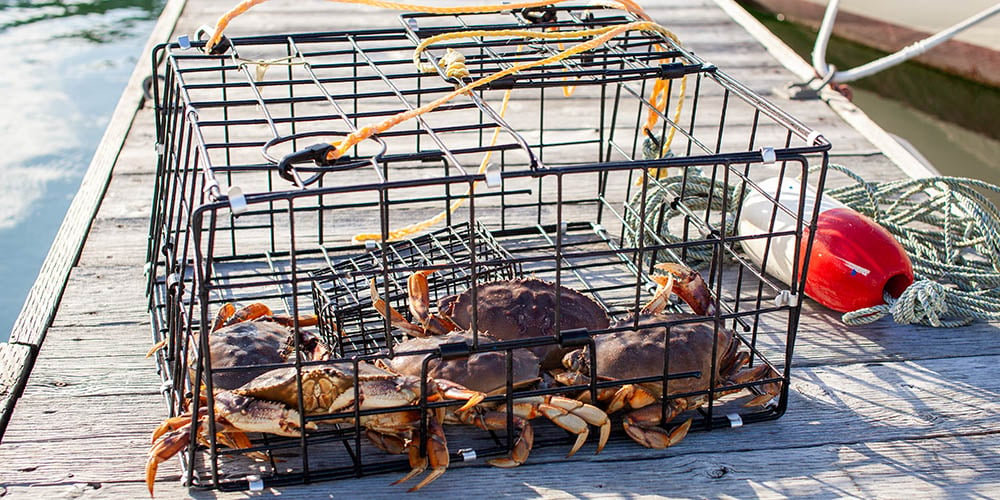
Top Things to Know to Start Crabbing
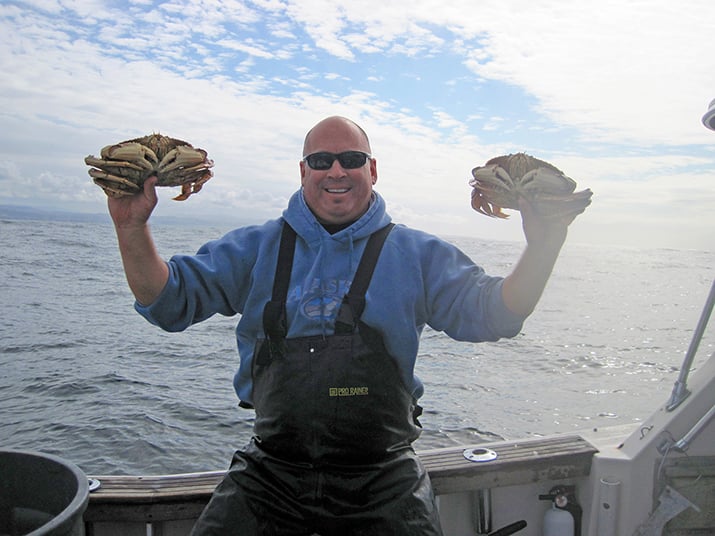
Catching your next crab dinner is easier than it may seem with the right gear and knowledge.
There’s nothing tastier than eating your own fresh-caught crab with a side of drawn butter. Catching these curious crustaceans is part art and part science. With the right tools, know‐how and preparation, you could be crabbing in a few easy steps.
Know Your Crabbing Territory
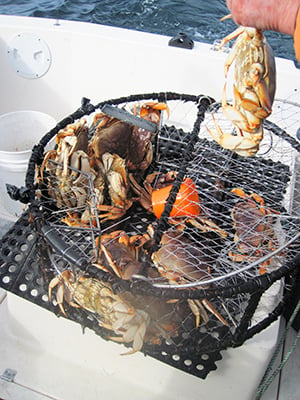
Dungeness crab are commonly found in California, Oregon and Washington.
It’s important to know what type of crab you’re trying to catch in your geographical area (see below). For example, Florida’s Blue Crab is much smaller in size and weight but is harvested year round, unlike Alaska’s King Crab, which can reach up to a 5‐foot leg span and is caught mostly in the fall months.
Familiarize yourself with the local laws about crab catching. This will affect the type of crabbing instrument and accessories you use. The size of the crabs you’re allowed to catch and what you’re not allowed to catch (i.e. young crabs, pregnant female crabs or, in some areas, turtles) will have an impact on outfitting your trap and the caliper measuring tool you use.
Also, be sure you have the proper license for the area. Rules and regulations change from time to time so it’s up to you to stay up to date. Check your state’s official website or Fish and Wildlife website for details.
Know What Equipment You’ll Need
There are many options of crab traps and trap accessories. The basics you’ll need are: the trap, pull line, float, bait bag and bag tiedown, bushel or basket, caliper, and of course, the bait. Additional accessories you may add include a bushel basket topper so you can fill crabs to the bushel brim when measuring the legal take home limit and a lid so crabs don’t escape. A turtle excluder ensures you don’t have any surprise turtles in your catch. A trap with one or more escape rings will let young crabs that are illegal to catch have an evacuation route. A crab net is an item many crabbers use as well as a live crab box to hold crabs in water until they are ready for transport. There are also weights you can add to your trap to make sure the trap doesn’t get taken by the current.
Know How to Rig Your Trap
How you set up your crab trap is just as important as arming yourself with the right equipment. Choose a sturdy pull line that will do well in saltwater and withstand the weight of your trap, bait and, fingers crossed, a lot of crabs. A leaded line is ideal. You’ll also want to make sure the rope is long enough for the depth of your crabbing destination. Consider whether you’ll need to weigh your rope down. If your rope floats and your trap is not heavy enough, you’ll want to tie weights to various points on your rope. Learn some useful knots such as the non‐slip mono loop, clove hitch and bowline. Watch our video on Beginner’s Guide to 5 Basic Boating Knots. Good knots will help you keep all the gear you’ve invested in for use in the future.
Select a float to secure to the end of your rope that will remain at the surface of the water and mark where you’ve left your trap. In many places, a float is a legal requirement for unattended traps. The float should be bright so you can easily spot it, and make sure to label it with your name and contact information. Secure a bait bag with bait contents inside your trap by using a tie (there are other options from a zip line to a snood, pin or hog tie), and you may want to place the baited bag inside a trap that has a bait box to slow down the eating process and catch more crabs. If you plan to leave your trap for more than a day or two, you may want to add some weights to the trap to help it not get pulled away by currents. Dive weights work well as they’re compact and you can attach them to the side of your trap. To save some of the DIY work, some traps come partially rigged or you can pick up a rigging kit.
Know What to Do After You Make Your Catch
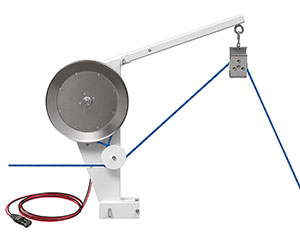
This 12-volt electric Line Hauler/Pot Puller has enough power to lift a crab trap.
Think about how many traps you plan on pulling up, how many times during the day and how often, in general, you plan on going crabbing. If you’re a young buck, you may like the idea of hauling in the catch and working your muscles. To conserve energy and avoid overstraining yourself, however, you may want to consider investing in an electric or hydraulic puller. Once you’ve pulled up your catch, you’ll need to sort your crabs by measuring what’s within the legal size limit and placing them in your holder basket or bushel with a lid to avoid a fine from Fish, Game and Wildlife. Count or weigh your crabs and keep a record or use the bushel to measure the legal limit to take. Return pregnant female crabs, small crabs and anything else that may have wandered into your trap unwanted back to the water safely.
Now that you’ve retrieved and sorted your hard‐earned catch, you’ll want to preserve it until cook preparation. To keep crabs alive in transit, make sure to have a bucket of water from their habitat, a locking cooler and ice handy. Bed the cooler with ice and place the crabs on top. The ice will slow down their metabolism and keep them alive until you arrive. This method works well if your destination is within a couple of hours.
For longer transit, take a towel soaked with the water from their habitat and place it on top of the crabs in an empty cooler and cover the top of the towel with ice. During long trips, keep replenishing the water frequently. If you don’t replenish the water, you risk crabs using all of the available oxygen in the water and dying. A final tip: Keep them away from wind or sun. Both are harmful to crabs.
Crab Types By Locations
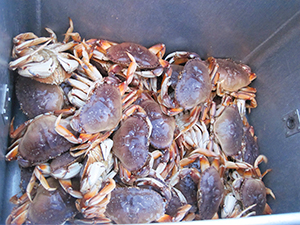
A load of Dungeness crab from the West Coast.
- Blue Crab—Florida, Delaware, Maryland, Virginia (East Coast)
- Blue King Crab–Alaska (some found in Washington)
- Box Crab–Washington (and British Columbia)
- Dungeness Crab–Washington, Oregon, California
- Golden King Crab–Alaska (some found in Washington)
- Jonah Crab–Maine, Rhode Island, Massachusetts
- Red King Crab–Alaska (some found in Washington)
- Red Rock Crab–Washington, Oregon, Northern California
- Rock Crab–Maine (and northern East Coast up to Canada)
- Snow Crab–Alaska, Maine
- Stone Crab–North Carolina, South Carolina, Georgia, Florida
Ready to go crabbing? For the gear you need, shop our selection of crabbing gear.